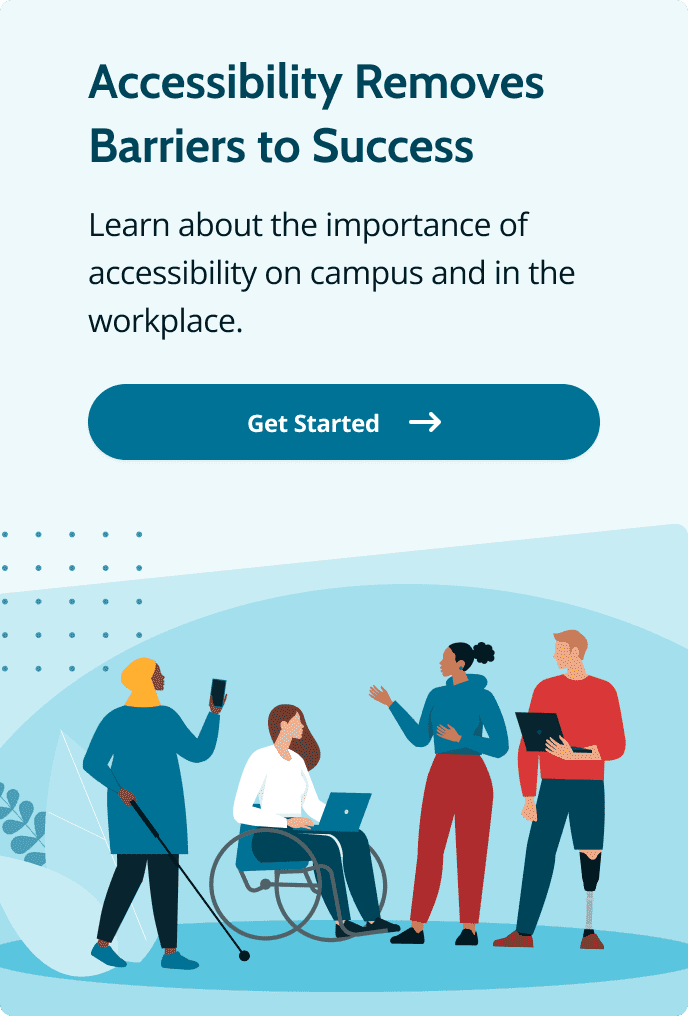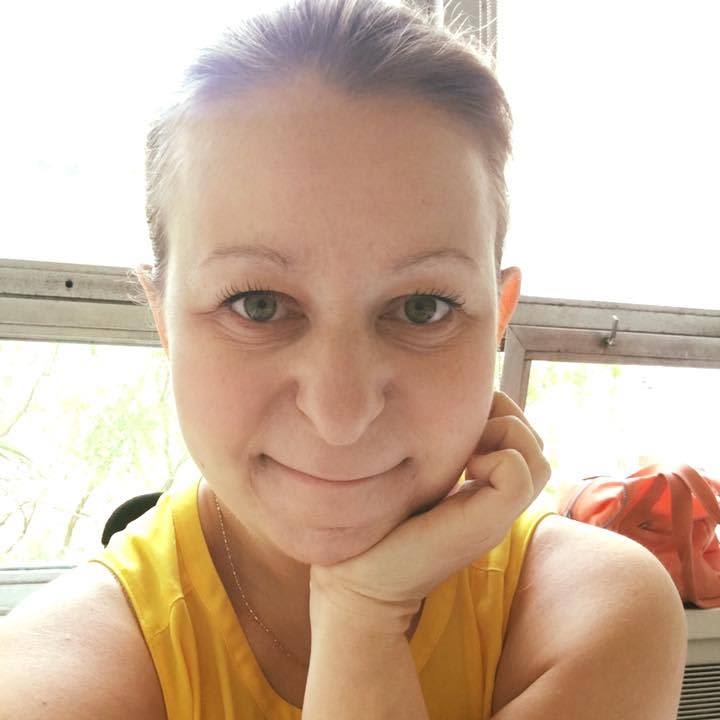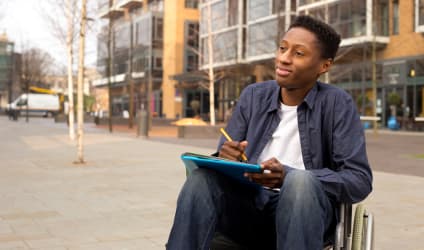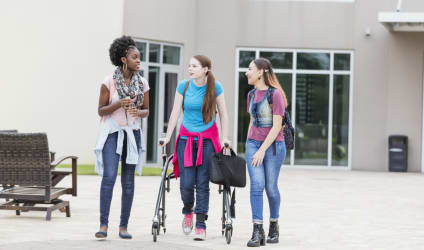How Universal Design for Learning Supports Students with Disabilities
Writer
Editor, Reviewer & Writer
Reviewer
Writer
Editor, Reviewer & Writer
Reviewer
- Colleges are acknowledging more diverse student learning and lived experiences.
- Students with disabilities often need learning accommodations as a form of support.
- Universal Design for Learning is a way for colleges to support students with disabilities.
- Incorporating UDL can help diminish the stigmas students with disabilities face.
Helping Students with Diverse Learning Experiences
Students enter college with various learning styles and life experiences. Among these are students who enter college with physical or learning disabilities. According to NBC, nearly 20% of undergraduates disclose a disability to their college or university. However, it is also estimated that many more never disclose this information.
As a result, universities are increasingly turning to the Universal Design for Learning (UDL), a pedagogical framework for creating inclusive learning environments. Below we consider UDL and how colleges and universities can better support students with disabilities by incorporating UDL techniques in teaching and learning.
What Is Universal Design for Learning?
According to Laurene Sweet, behavior and curriculum intervention specialist, universal design for learning is "a framework that calls for a mindset shift away from one-size fit all instruction" to provide "a [more] flexible curriculum that embraces learner diversity." The approach encourages instructors to craft course instruction, content, and materials in a way that is accessible to all students regardless of preferred learning style or learning disabilities.
UDL's framework is unique in that its flexibility can be applied to any student (not just those with disabilities), any level of learning, and any field through its three core principles: providing multiple means of engagement (why are we learning), representation (what are we learning), and action and expression (how are we learning).
Utilizing UDL teaching methods can bring more equitable learning opportunities to students with diverse "needs, strengths, interests, preferences, and backgrounds," said Sweet.
Examples of Universal Design for Learning
UDL methods can be used in classroom settings in various ways. Here are some examples of how you may see UDL used in your college classes.
- Interaction: UDL encourages classroom interactions beyond those between the instructor and student(s). Instead, universal communication among course participants, including student-to-student interaction, benefits the learning process. To achieve these varied interactions, a UDL course may incorporate group work, particularly through assignments that give each participating student a different role.
- Content Delivery: UDL also encourages instructors to deliver course content in many forms instead of just standing at the front of a class and lecturing. Lectures might be accompanied by interactive content — computer simulations, multimedia content, fieldwork, or hands-on experiments or projects to be completed by students.
- Feedback and Assessment: Perhaps most importantly for students concerned about their final grades, UDL provides instructors with flexibility and creativity around providing feedback and assessing course work. By using online platforms like Canvas or Moodle, faculty may audio record their feedback instead of writing it out as a rubric. In other instances, faculty may ask students to assign themselves grades for their completed work.
- Classroom Setup: A course utilizing UDL methods may also look different when you first step into the physical space. UDL courses may have classrooms set up with different sections — space for group discussions, space for quiet individual work, as well as group learning. Similarly, a UDL instructor may play quiet music in the background while students are working on a reading or writing assignment and similarly may offer students the opportunity to use earbuds for concentration when working alone.
Why UDL Is Important for College Students with Disabilities
Stigmas associated with disabilities may make it difficult for students to report disabilities and request necessary accommodations during college.
In a longitudinal study of college students attending two- or four-year institutions between 2009 and 2016, the National Center for Education Statistics (NCES) found that only one-third disclosed their disability to their school.
UDL may decrease the need for learning accommodations "as [it] emphasizes proactive support in anticipation of learner variability," Sweet told BestColleges. Instead of providing a traditional approach to teaching and learning, UDL opens up the possibility of an environment in which learning happens by "receiving and sharing information in a way that best suits individual learners."
Ultimately, UDL provides the possibility of changing "the way people think about human differences" by creating learning settings that "celebrate strengths and honor strengths" among students, said Sweet.

Additional UDL Resources for Students with Disabilities
Students interested in learning more about UDL can check out the following resources:
The founding organization of the UDL framework, CAST provides good information on UDL guidelines and resources for incorporating UDL techniques in the classroom.
A branch of the CAST organization, this website provides access to coaching, technical assistance, and digital resources to increase awareness about UDL.
A national organization bringing awareness to thinking and learning differences, UNDERSTOOD provides an interactive quiz tool allowing users to generate lists of resources specific to their learning needs.
Students interested in UDL resources may also wish to check in with their university's teaching and learning center to learn of ways in which they are encouraging faculty to incorporate UDL in the classroom.
This open-access website provides comprehensive information on UDL, including UDL assessment tips in post-secondary education and tips on how to include UDL methods in online instruction.
With Contributions From:

Laurene Sweet, PT, ATP, MEd, DPT
Laurene Sweet (she/her) is a RESNA certified assistive technology professional, doctor of physical therapy, and Ohio licensed intervention specialist empowering thousands of individuals with disabilities. She is also a Mayo Clinic-trained wellness coach. Dr. Sweet provides a unique perspective as a professional and parent of a college student with a learning disability. She studied special education under a federal grant to promote access to assistive technology in underserved areas and has a special interest in assisting people with significant disabilities. Laurene currently serves as a behavior and curriculum intervention specialist with the Cuyahoga county board of DD.







